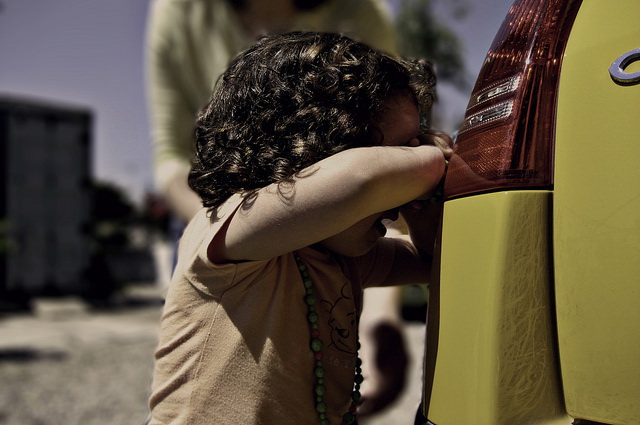Tag Archives: autism sensory difficulties

Managing Behavioural Difficulties in ASD Children
Behavioural difficulties are common in children who have ASD, but with the right strategies and support, they can often be mitigated through effective management. There are myriad reasons for these difficulties, such as issues with communication, sensory processing, social interaction, and balance issues which affect active play. It’s vital that parents and caregivers understand these behaviours are not their “fault”, they are merely symptoms of the underlying difficulties the child with ASD is facing.
Understanding the Causes
The root causes of behavioural difficulties are generally as follows:
Difficulties with communication: Children with ASD typically struggle with expressive language, understanding what is being said to them, and picking up on non-verbal communication cues. This can, understandably, become quite frustrating and provoke problem behaviours.
Difficulties with social situations: The difficulties presented by social situations for a person with ASD go beyond just communication; people with ASD also struggle to understand other’s points of view (inflexible in their opinions), and grasp the “unspoken rules” of social interaction that state when to, for example, end a conversation. Due to all of this, children with ASD may shun social contact, and they are more likely to experience bullying.
Difficulties with unstructured time: People with ASD have a hard time dealing with situations where there is no set schedule, as their brains have a hard time sequencing activities on their own. For this reason, children with ASD are more likely to act out during recess or other break times, as they feel confused and frustrated.
Difficulties processing sensory information: Those with ASD often have over or under-sensitive senses, leading to a tendency to get overwhelmed or to seek stimulation to a problematic degree. They may react strongly to touch, be very picky eaters, get overwhelmed by loud noises (or be unable to concentrate over background noise), etc.
Additionally, one should always remember that people with ASD do not easily adapt to change; always be on the lookout for things in their environment or schedule that have been altered, as this may trigger problem behaviours. Illness (especially seizures, which ASD individuals may be prone to) can also trigger acting out, as the child with ASD cannot easily vocalize his or her pain. Consider using diagrams to help children express where they are feeling pain.

Troubleshooting the Refusal to Attend School in Children with Autism Spectrum Disorders
For a child with ASD, school can be a scary place. There is a lot of sensory information being thrown at the child from what feels like all angles, a high level of social interaction is required, and unstructured times (such as between classes, or at recess) can leave the child feeling lost. As such, many children with ASD develop a strong resistance to attending school, and owing to the rigidity of those with ASD, it can be very hard to convince the child to do otherwise.
No parent enjoys sending their child to a place he or she hates, and every parent wants their child to succeed at school, and to enjoy it as much as possible. To that end, it’s important not to give up on the concept of a child with ASD enjoying school; instead, if your child is resisting school attendance, try the following strategies to get him or her turned around to the idea of school again:
Try to discover why the child does not wish to attend school; remember that bullying is a common experience for those with ASD, due to their socially awkward behaviour. Always begin by making sure the child is not being picked on. Also check for:
- Unstructured times being a subject of stress and confusion.
- A specific unpleasant event which the child may now be avoiding, but has been unable to vocalize (or possibly even able to identify that he or she is so upset about it). Remember that even minor events may seem very confusing or upsetting to someone with ASD.
- A lesson or class the child is struggling with. He or she may have become so frustrated at not getting it that the entire idea of school has become upsetting.
- If your efforts come up empty, contact the school to see if any of the staff have observed something that may have motivated the child’s resistance.
If your child is having a difficult time expressing his or herself, you may want to use visual supports to facilitate communication.

Autism Sensory Difficulties and How to Address Them
People with Autism Spectrum Disorder (ASD) typically have difficulty processing sensory information such as sounds, sights, and smells. This is usually referred to as having issues with “sensory integration”, or having sensory sensitivity, and is caused by differences in how the brain of a person with ASD understands and prioritizes the sensory information picked up by the body’s many sensory receptors. When this breakdown in communication becomes too intense, the person with ASD may become overwhelmed, anxious, or even feel physical pain. When this occurs, some with ASD may act out.
The over and under-sensitivity ASD people experience may affect some or all of the following seven senses:
Sight
Including seeing objects as darker than they really are, blurred central vision, having poor depth perception (resulting in clumsiness), and distorted or fragmented images.
Sound
Imbalanced hearing (hearing sounds only in one ear), may either enjoy loud noises or be very agitated by them, may have difficulty cutting out background noise (affecting concentration), sounds may be distorted. These difficulties may also contribute to balance issues.
Touch
A person with ASD may either crave touch (and not know how much to apply, such as holding a person too tightly) and have a high pain threshold, or shun touch (even common gestures of affection, such as hugs) and struggle with certain sensations, such as those produced by rough fabrics, hair brushing, etc.
Taste
Some with ASD may crave strong tasting foods (such as very spicy foods) or even go so far as to try to eat non-edible substances like Play Dough, while those who are hypersensitive to taste will shun all but the blandest foods, and may dislike foods with anything but a smooth texture.
Smell
Some people with ASD may have no sense of smell and remain unaware of strong odours (leading them to rely on oral cues; they may taste things to get a better sense of them), while others may find common smells (such as from deodorants, lotions, shampoos, and perfumes) too strong to bear. For this reason, they may be extremely averse to going to the bathroom.
Balance (‘vestibular’)
People with ASD may rock back and forth so as to get enough input on where they are situated, as they lack a sense of balance. They may have difficulties with sports, particularly anything gymnastic where the head is removed from an upright position. They may be more prone to car sickness than those who lack ASD.
Body awareness (‘proprioception’)
As people with ASD struggle to orient their bodies properly in space, they may stand too close to others, have a hard time navigating rooms or moving around obstructions (including people), experience difficulties with fine motor skills, or experience Synaesthesia (a condition where senses are “confused”, i.e. one will hear or taste a colour).
